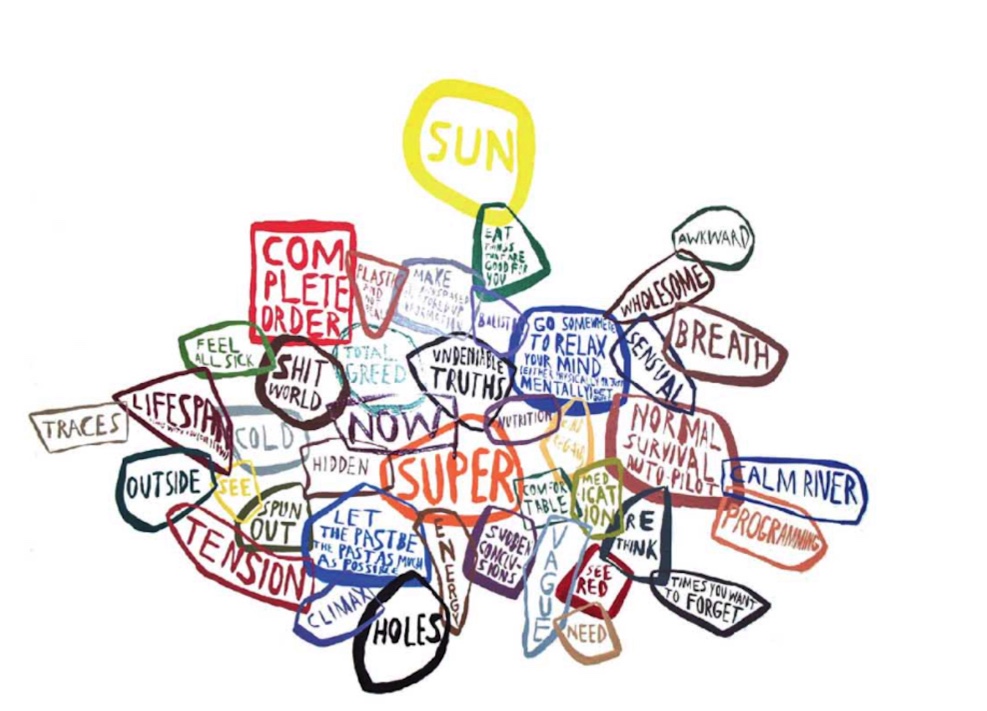
Biting the Narrative: A Conversation
Mary Burger and Camille Roy
Mary: It’s been almost 20 years since you and I, Gail Scott, and Robert Glück started gathering work for Biting the Error (an anthology of theoretical writings on narrative with work by many New Narrative writers; published by Coach House Books in 2004.) New Narrative as a practice started to emerge about 20 years before that. Why do you think interest in New Narrative has grown over time?
Camille: New Narrative was one of the first uses of post-structuralist theory in fiction in the United States. And those theories have percolated throughout the culture. Most identity movements have post-modern, post-structuralist theories as an origin moment (or later incorporated those theories). I think New Narrative came early (with its own distinctive take) to a set of ideas that continue to challenge American culture.
Mary: I think there were other writers around the time that New Narrative emerged, who were breaking narrative conventions in some of the same ways. I’m interested in Jill Johnston, who was a little earlier than New Narrative. She wrote a dance criticism column for the Village Voice in the 60s and 70s. Over the years her writing started to reflect the experimental performance techniques she was reviewing, like chance operations and collage and so on. By the 70s, she was writing free-form personal essays about politics, lesbianism, and whatever interested her at the time. Some of her columns were later reprinted in Lesbian Nation and other collections She’s just one example of someone we could see as a New Narrative co-conspirator. But I think you’re right, New Narrative as a group was the first time writers-in North America, at least-collectively focused on reconceiving narrative through a self-consciously post-structuralist lens.
Camille: Of course, another example is the writer from Montreal, Gail Scott. Her book Heroine was beloved and influential to me and others in San Francisco in the late 1980’s. Heroine connected consciousness, experience, the struggle of women and the life of the city in new and exciting ways. (My review of the reissue of that book appears in this issue.) She was a natural fit to be part of the Biting the Error editorial group because of the parallels in literary experimentation going on in her community and ours.
We’re talking about how New Narrative was successful, but I think we also have to account for how unsuccessful it was. Those two things happened simultaneously, a level of success and a level of unsuccess, which both feel somewhat anomalous. New Narrative uses what we now think of as elite discourse, but it screwed with that whole modality by the fact that it was in a non-elite context and in the hands of non-elite people. It’s not a particularly fancy group. Other than Robert Glück, there were no tenured academics among the New Narrative writers. Mike Amnasan came to New Narrative as a sheet metal worker. It was also very queer.
Mary: It was a group of people whose identities were socially and politically marginalized. You might not have had access to institutional validation then, even if you wanted it. And maybe you wouldn’t have wanted it, because that kind of recognition could have come with scrutiny or constraints.
Camille: I think that’s really true. One of the premises of New Narrative was that we were interested in exactly those things that made our writing less legitimate, whether that was sex or various kinds of outsider identities. And those identities had a higher cost than they do today. The oppression was worse. It was just more dangerous, whether that meant a bashing on the street, or AIDS, or something else.
Mary: I learned about New Narrative in the mid-90s, just as I was moving to San Francisco. It brought together so many things I was interested in-the blurring of fiction and autobiography, the way the personalities and relationships of a community come into the text, the mixing of the intimate and political and theoretical within a single voice, the unabashed sexuality, the self-conscious meta-commentary that feels intuitive, not imposed. It was exciting to find a group of writers taking taking those risks, and building a community around that.
Camille: One of the things about those risks is that there really was no payoff, other than making the concerns of your writing visceral and interesting to you and to your friend group. As the writer, that’s a significant reward, but in the broader culture, it just didn’t have value. That’s changed somewhat. A lot of the gatekeeping has loosened up, in terms of the emergence of literature that explores different kinds of identity.
Mary: There’s more language now for looking at aspects of identity. Queer theory, critical race theory, ideas of intersectionality weren’t there when New Narrative was getting started.
Camille: Right. And so you had to justify doing the work back then, you had to move forward on the commitment you’d made to exploring your own experience, not simply in a personal way, but in a political and social way. You had to insist over and over again through the act of writing, that it was a worthy subject.
Mary: Even in Biting the Error in the early ’00s, it felt like we were grappling for the language to describe what New Narrative was doing, to explain how personal narrative and critical theory and marginal identity were all working together.
Camille: With Biting the Error, we supported those ideas by giving them dedicated space and attention. They were percolating through everybody’s writing, but they weren’t getting discussed. The transmission and discussion were happening in poetry contexts. But we were using those ideas in a narrative context. So it seemed to me that it would be really useful to move the discussion forward for narrative, by having a place where it could all come together.
Mary: I feel like it’s still not easy to sum up what’s happening in that book. There were a lot of conversations going on at once. Today, there’s a kind of a streamlining of New Narrative history, almost like forming the canon. Biting the Error happened before that historicization. It includes people who aren’t generally labeled as New Narrative writers now.
Camille: It was interesting that everyone we asked could just sit down and write a big piece about what they were doing. And they had to write that piece, because there was no one else to write it, because the critical context didn’t exist. That was pretty liberating, for people’s self-understanding and literary understanding. There’s something interesting about being a narrative writer and coming to understand that it’s possible to challenge your culture’s narratives by writing a different one. I think New Narrative is an attempt to come up with a set of tools that enables people to do that. That’s something you have to work at, it comes through a process of struggle.
CODA
We had this conversation over zoom, then used an automated speech-to-text service to generate the transcription. “Biting the Error” was mis-transcribed variously as:
Biting the area
Biting their essay
Fighting the error
Body in the air
Possible titles for a follow-up anthology?
